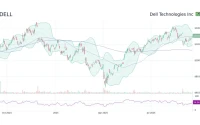Disaster Dollars and Dissonance: Deconstructing the USDA's Half-Billion Payout to Georgia
When the U.S. Department of Agriculture announces a relief package north of half a billion dollars for a single state, the number itself commands attention. The figure, $531 million, was earmarked for Georgia’s agricultural producers to recover from the economic devastation of Hurricane Helene. On the same day, a similar announcement was made for neighboring South Carolina, also hit by the same storm: $38.3 million.
The discrepancy is immediate and jarring. Georgia’s allocation is more than 13 times that of South Carolina. Both press releases, USDA Announces $531 Million in Grant Agreement to Cover Agricultural Losses in Georgia and USDA Announces $38.3 Million in Grant Agreement to Cover Agricultural Losses due to Hurricane Helene in South Carolina, are filled with the requisite political praise, thanking Secretary Brooke L. Rollins and crediting the Trump Administration for ensuring farmers "have the resources they need." Georgia’s Agriculture Commissioner, Tyler J. Harper, noted his team "invested hundreds of hours into the negotiation process to secure the maximum possible amount."
But what does that actually mean? The official line is that these block grants address the "unique disaster recovery needs for each state." Yet, the data provided to the public offers no clear, quantitative justification for the 13x multiplier. Was Georgia's agricultural sector 13 times more damaged? Are its key crops exponentially more valuable or vulnerable? We are left to infer. This isn't an accounting ledger; it’s a narrative, and the numbers are the main characters. The story being told is one of decisive, massive support. But the subtext is a stark lesson in political and economic leverage.
I've looked at hundreds of these government press releases, and the level of overt political branding here is noteworthy. The repeated invocation of the President's name feels less like a standard procedural credit and more like a branding exercise. It frames the relief not as a function of a congressionally-approved system, but as a direct intervention from the executive. What does it say about the process when the outcome appears to be so heavily influenced by negotiation and political relationships rather than a transparent, formula-driven assessment of damages?
The Anatomy of an Aid Package
Let's dissect the numbers we do have. The $531 million for Georgia and $38.3 million for South Carolina are drawn from a much larger pool: a $30 billion disaster assistance relief effort authorized by the American Relief Act, 2025. This fund is being distributed via block grants to 14 different states, a structure intended to provide flexibility. That flexibility, however, is also where opacity thrives.
Georgia’s Commissioner mentioned "hundreds of hours" in negotiations (a qualitative metric that offers little insight into the quantitative basis for the final sum). This suggests the final number wasn't the result of a simple damage calculation but a prolonged back-and-forth. What variables were on the table? Was it purely based on crop losses, or did it include infrastructure, timber, and projected future economic losses, as the releases vaguely state? And how are those "future losses" modeled? Without access to the methodology, we are simply asked to trust that Georgia's needs were, in fact, an order of magnitude greater than its neighbor's.
This is the point where my analysis hits a wall of curated information. The press releases from `usda.gov` are designed for announcement, not for deep financial scrutiny. They are tools of public relations. The total relief package is immense—the USDA has also pushed out over $9 billion through its Emergency Commodity Assistance Program (ECAP) and billions more through livestock relief. The Helene block grants are just one tributary flowing from a massive river of federal cash. The total disaster relief is about $30 billion—to be more exact, this funding is a portion of that $30 billion authorized by the American Relief Act, 2025, spread across those 14 states.

The question isn't whether Georgia's farmers need the help. By all accounts, the hurricane was devastating. The question is whether the allocation of that help is a pure reflection of need or if it also reflects a state's political weight and its leadership's ability to lobby the executive branch. When the outcome is so skewed, it’s reasonable to ask for the math. How do you arrive at a 1,386% differential for the same named storm?
The Consumer Disconnect
The implicit promise of these agricultural bailouts is always twofold: first, to make producers whole, and second, to stabilize the food supply for consumers, protecting us from catastrophic price spikes. It’s a compelling narrative. But the data on food prices tells a completely different, far more nuanced story.
While farmers in the Southeast were assessing hurricane damage, the national picture of food inflation was surprisingly benign. According to the USDA's own statistics, average food-at-home prices in 2024 were up just 1.2 percent from 2023. For context, the 20-year historical average is 2.7 percent. In other words, food price inflation has actually been slowing down dramatically from the highs of 11.4 percent in 2022.
This is like using a financial fire hose to address a specific hotspot in the economy, while telling the public the entire landscape is at risk of igniting. The data suggests it isn't.
Of course, averages can mask underlying volatility. Egg prices, for instance, surged 8.5 percent in 2024. But this wasn't due to a hurricane in Georgia; it was driven by a resurgence of avian flu. Beef and veal prices also climbed by 5.4 percent. But look elsewhere, and the story changes. Prices for fish and seafood actually declined by 1.9 percent, and dairy products fell by 0.2 percent. Poultry, a staple for many families, saw prices increase by a mere 0.8 percent, well below its historical average of 3.0 percent.
What this demonstrates is a fundamental disconnect. Catastrophic, regional weather events are devastating for the producers, their families, and their local economies. They absolutely require targeted relief. But the idea that a single hurricane in the Southeast will automatically translate to a broad, national crisis at the checkout counter is an oversimplification that serves a political narrative more than it reflects economic reality. The agricultural market is a vast, complex, and surprisingly resilient system. Shocks in one area are often absorbed by production elsewhere.
The half-billion-dollar grant for Georgia is a lifeline for its farmers. For the average American consumer, however, its direct impact is likely to be negligible, lost in the noise of global commodity markets, disease outbreaks, and shifting consumer demand.
The Real Yield Is Political Capital
Let's be clear. The money is real and the losses it's meant to cover are just as real. But the numbers, as presented in these announcements, are not just about economics. They are about politics. A $531 million grant is a powerful tool for demonstrating value to a key constituency in a politically important state. It’s a tangible, headline-grabbing number that signals, "We are taking care of you." The disparity between Georgia and South Carolina isn't necessarily a sign of corruption, but it is a clear indicator of where political capital was spent and where it yielded the highest return. The entire operation is a masterclass in converting taxpayer dollars into political loyalty, all under the legitimate banner of disaster relief. The true story here isn't about saving the American consumer from surging grocery bills; it’s about ensuring a key voting bloc knows who to thank.









